Sorted by date Results 51 - 75 of 79
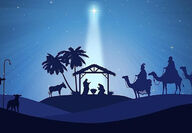
The Christ Child in the manger and other pictures of the story of Bethlehem have been used in church services from the first century. But the crib in its present form, and its use outside the church originated with St. Francis of Assisi in 1223. The place was a cave in Grecio, Italy, a mountainside village overlooking a beautiful valley. Inside the cave was a live ox, a donkey, and a manger surrounded by hay. A beautiful infant was sleeping in the manger. This first nativity creche scene was...
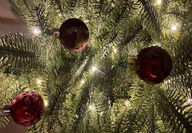
We are closing in on the end of the year, a year unlike any other – once again. The annual Holiday Season is intended to be a time for giving thanks and spreading cheer. Song lyrics tell us it's the happiest time of the year. But for many, even in a normal year, the holidays bring stress. How can you help yourself through stressful times? Take a break. Get outside for a walk among the trees. Trees care for your peace of mind. Exposure to nature decreases mental fatigue by relaxing and r...
In addition to Christmas trees, there are other plants that have become traditional during the holiday season. Poinsettias are native to Mexico, but are grown in commercial greenhouses under special conditions, to prepare them for distribution before Christmas. The plant was introduced to the U.S. in 1828 by J. Poinsett, the first U.S. ambassador to Mexico. More than 75 million poinsettias are sold during the Christmas season each year, making it the top-selling potted flowering plant in the U.S. The pretty red portions of the plant we enjoy...
One of the most iconic images of the holiday season, Christmas trees, started as a German tradition and were introduced in the U.S. by German settlers. Live Christmas trees have been sold commercially in the U.S. since about 1850. Most of these trees are grown on more than 15,000 Christmas tree farms, covering 350 million acres across all 50 states. Oregon, North Carolina and Michigan are the top growers. North Dakota has growers, too – do an online search for locations, with some options to cut your own. The average price of a live cut C...
Thanksgiving, for many, is their favorite holiday of the year! Food takes center stage as tables are graced with savory and colorful sides of sweet potatoes, stuffing, mashed potatoes and gravy, cranberries and pumpkin pie. The meal revolves around the star of the show - turkey. The first “Thanksgiving” was a harvest celebration enjoyed by the pilgrims of Plymouth Colony in 1621. Celebrating the fall harvest was an English tradition, and the pilgrims had much to celebrate after surviving the long journey on the Mayflower and arriving at Ply...
Snow, salt and soil: Not a recipe for the latest trendy dish. But it could be a recipe for tragedy for your turf and trees. As cold and snowy weather sets in, many of us focus on safety precautions – we watch the weather forecast, we gauge the extra time it may take to travel, we check outside to see if we need to sweep or shovel the walk…and maybe, for good measure, we sprinkle (or pour) some de-icing salt on surfaces where ice has formed. Safety first. While safety must be a priority during every season, there are unintended consequences of...
Veteran’s Day is observed on Nov. 11 – to commemorate the end of WWI at 11 a.m. on Nov. 11, 1918. The day honors (and justly so) all of America’s veterans for their patriotism, love of country, and willingness to serve and sacrifice for the common good. The word “veteran” can be used in a completely different context to describe someone (or something) with long experience in some occupation or skill. Let’s stretch the meaning a bit more and talk about “Veteran Trees” – trees with historic significance, or those that have lived a long life of se...
In North Dakota, November is celebrated for a number of holidays including Veterans Day, Thanksgiving Day, and another that is steeped in tradition – Opening Day of Deer Season. More than 58,000 hunters were successful in harvesting nearly 40,000 deer during the 2020 N.D. deer season. That’s a lot of sausage! Trees and shrubs are important habitat for deer, providing cover and food. Between May and August, most of a deer’s diet consists of forbs, and the tender growing stems of trees and shrubs. During fall and winter, crops become an incre...

If you ask nearly any kid, the best part of October might be the way the month ends: Halloween. The challenge is perfecting the most creative or spookiest costume. The reward is loads of candy! The most popular candy in the U.S. varies from year to year, but Reese's Pieces, Reese's Peanut Butter Cups and M&Ms are among the top choices. In Canada, it's Kit Kat. Chocolate dominates as the favored choice in many countries, and we have the Cacao ("kuh-KOW") tree to thank! Chocolate comes from beans...
It is part of the Autumn Ritual: Harvest the last of the vegetables and clean up the garden. Mow the yard, one last time before winter. Rake/mow/blow the leaves – but what to do with all these leaves?? If you have an open yard, North Dakota’s wind may take care of most of the leaves and share them with a neighbor. Most homeowners take great pride in their homes and yards and invest time and energy to keep things tidy. (A 2005 NASA study estimated around 40 million acres of lawn exist in the continental U.S. – making turfgrass one of the large...

Along with predicting high and low temperatures and chances of precipitation, weather forecasters added a new element to weather reports in 2021: Air Quality Index (AQI). Smoke from fires in the western states and in Canada has traveled across the entire country, blocking incoming sunlight and impacting visibility. Fine particulate matter is a major component of smoke and can be a major health issue for sensitive groups including young children, the elderly, and individuals with reduced...

October - the month of things black and orange: cats and bats, pumpkins and leaves, and boxelder bugs. Those pests!! They seem to magically appear every fall and congregate on sunny, warm surfaces. We may be able to tolerate them outside, but when these colorful critters enter our homes, they've crossed the line. Boxelder bugs are classified as "true bugs" – a class of insects with a rigid piercing, sucking mouthpart that looks like a long beak and works much like a straw used to drink from a j...
There’s something about sitting around an evening campfire, reminiscing about the day of hiking or fishing, or simply spending time with family and friends. Any type of wood will do, just so it’s perfect for s’mores. But if you are cutting or buying wood for your fireplace for a little romance, or wood stove for supplemental heat, there are factors to consider. Firewood differs in heat value as well as color of flame, fragrance and sparking, depending on the species of wood. Crabapple and apple have the most colorful flames, produce low smoke...
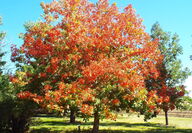
Many people pick fall as their favorite season of the year. After the extremely hot and dry summer of 2021, we welcome the cooler temperatures, the occasional much-needed rain with a little thunder mixed in, and the cheers of football season! Fall colors exhibited by trees and shrubs are a product of shorter days. Summer sunlight triggers leaves to keep making chlorophyll, necessary for photosynthesis and the whole sugar-making process, enabling a tree to grow. But as the hours of daylight...
One of the sure signs of autumn is fall foliage in the landscape, as woody plants prepare for winter. Here are some things that you can do to prepare your trees for the long dormant season: 1. PLANT. Fall is a great time to plant trees. Cooler temperatures enable plants to acclimate to a new home without the stress of high air and soil temperatures. While selection at nurseries may be limited, trees are often on sale in the fall. Make diverse species choices that are suitable for North Dakota’s alkaline soils – don’t buy something just becau...
Trees can be used to beautify even small spaces. Here are some trees that will work for narrow boulevards, near structures, or beneath power lines. Flowering crabapple trees are among the most widely planted ornamental tree species and many types thrive in North Dakota. ‘Spring Snow’ offers a spring display of white flowers that are sterile, so no fruit is produced. Some crabs produce small fruit that hangs on the tree through the winter (“persistent” fruit), providing a food source for birds and adding color to the winter landscape – try t...
School is back in session! That marks the traditional end of summer and beginning of fall, with iconic smells of pumpkin spice and changing colors of the landscape. In North Dakota, we see lots of brown and gold fall foliage on the trees, but the vibrant reds and orange colors we see in the photos and autumn views of the New England states or Blue Ridge Mountains are contributions of species we cannot grow here – including many maples. That is a disappointment to many, but soils dictate what will and will not thrive in a specific site. In t...
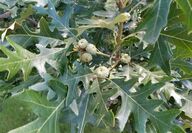
"Mighty oaks from little acorns grow..." This 14th century English proverb inspires us never to give up, and to remember that great things do indeed come from small beginnings. While there are many species of oaks across the country, the only species native to North Dakota is bur oak, also known as Mossycup oak. Bur oak is easily identified by its distinctive leathery, tannin-filled leaves with rounded lobes and thick, corky bark. It is these adaptive features that have enabled oaks to endure...
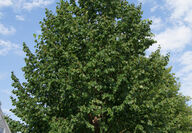
Lindens are another great choice for community tree plantings. American linden is also known as basswood, with a soft wood that is used for carving things like duck decoys. This tree is native to the eastern part of the state. While cottonwood reigns as the largest-statured tree in North Dakota, lindens can grow to substantial size in preferred locations. Communities in the northeastern corner of the state are home to very large lindens with trunk diameters of nearly three feet and heights up...
As drought conditions continue to spread across the country and across the state, the lack of water expresses itself through plants. Trees respond to short-term drought by wilting, leaf scorch and leaf drop. Long-term damage from drought happens over a period of years and includes stunted growth, branch dieback, and possible death of the plant. Many woody plants can take up to three years after a drought to display negative long-term effects. Pest problems are another result of long-term drought. Healthy trees are able to ward off pests like wo...
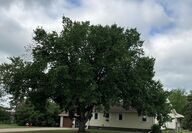
American elm is North Dakota's state tree. It is these canopies that, with their beautiful vase-shape, form leafy "tunnels" along elm-lined streets. Elms were a natural choice for planting in communities and windbreaks because it was one of our tough native species. Then, the unthinkable happened: Dutch elm disease (DED) entered the U.S. in the 1920's and found its way to Mandan in 1969. It has spread to every county of the state, decimating American elms in North Dakota's communities,...
This week’s featured tree is honeylocust – specifically, ‘Northern Acclaim’ thorn-less honeylocust. While the species is native to eastern states of the U.S. and is covered with thorns, ‘Northern Acclaim’ is a cultivar selected and developed by the NDSU Woody Plant Improvement Program. As the descriptive name implies, this selection does not have thorns and is proven to be hardy for our harsh winters. The tree’s most distinctive feature is its delicate bright green foliage. Each leaf is composed of tiny leaflets, giving the tree an exotic loo...
The current tree planting project in New Rockford has been completed! Through the Family Forestry Grant, 30 trees have been planted on various properties throughout the community. All have been planted, mulched with wood chips, and are being watered by the property owners who have agreed to permanently “adopt” these trees. Because of the current hot and dry conditions, the trees must be monitored closely, and watered frequently, to enable these young trees to become established in their new environment. (Please, water your trees!) The city has...

The storm that devastated the City of New Rockford was nearly three years ago – July 8, 2018. As a testament to the community's determination to rebound and rebuild, New Rockford was host to the State Arbor Day event in May, 2019, a "celebration of recovery and resiliency." Hundreds of saplings were distributed to residents as part of the Arbor Day Foundation's Storm Tree Recovery program, to encourage residents to replant around their homes. Now, the city is implementing a grant project to b...
The City of New Rockford is submitting an application for funding from the North Dakota Forest Service to help replant trees in the community. With this grant, trees will be planted on the boulevards - but we need your help to water and care for the trees once they are planted! New Rockford lost over 1,000 trees in the July 2018 storm – along streets, in yards, the parks, golf course and cemetery. This is a wonderful opportunity for New Rockford to not only replant a diversity of trees, but to also create a healthy, resilient community f...